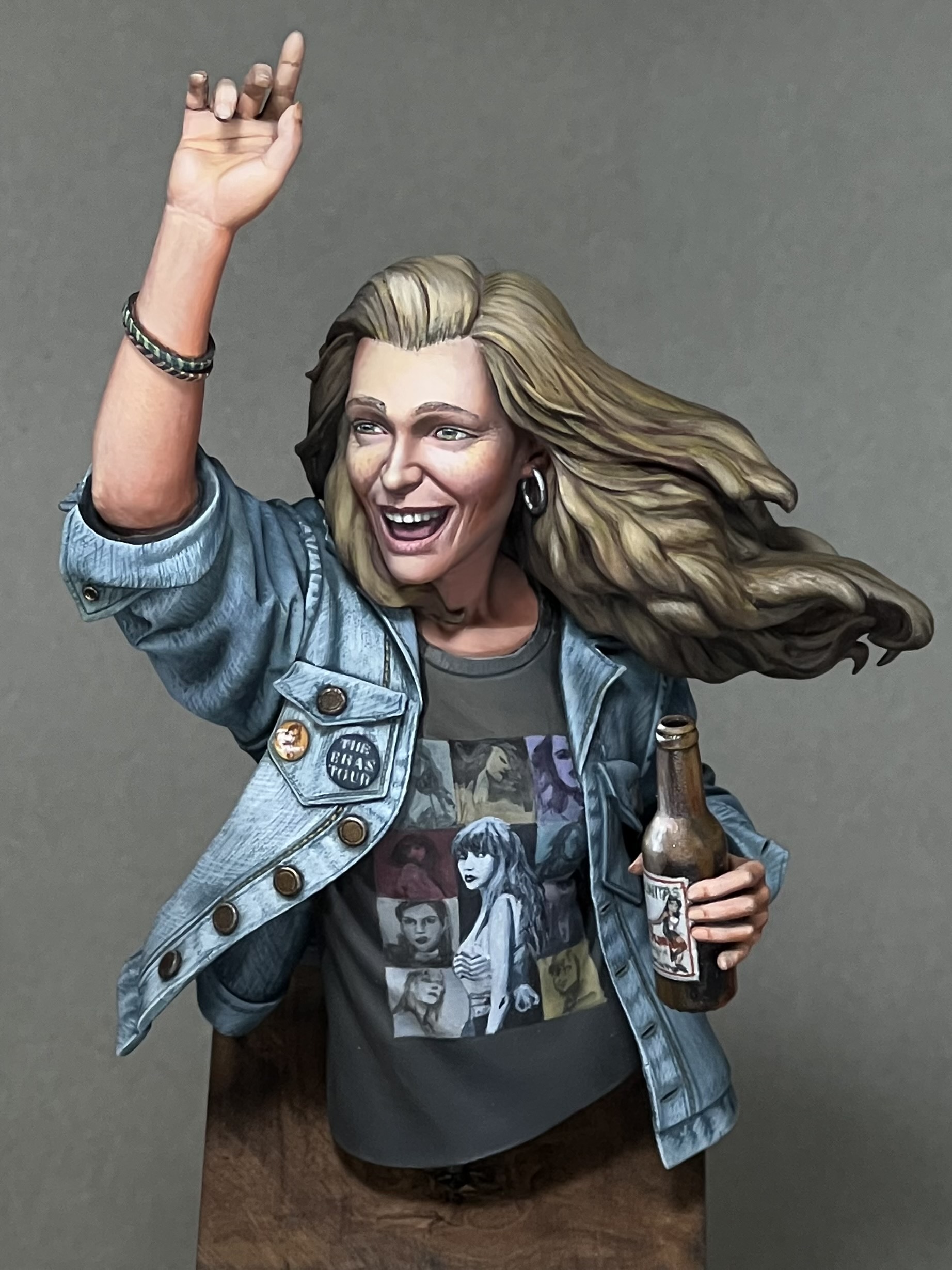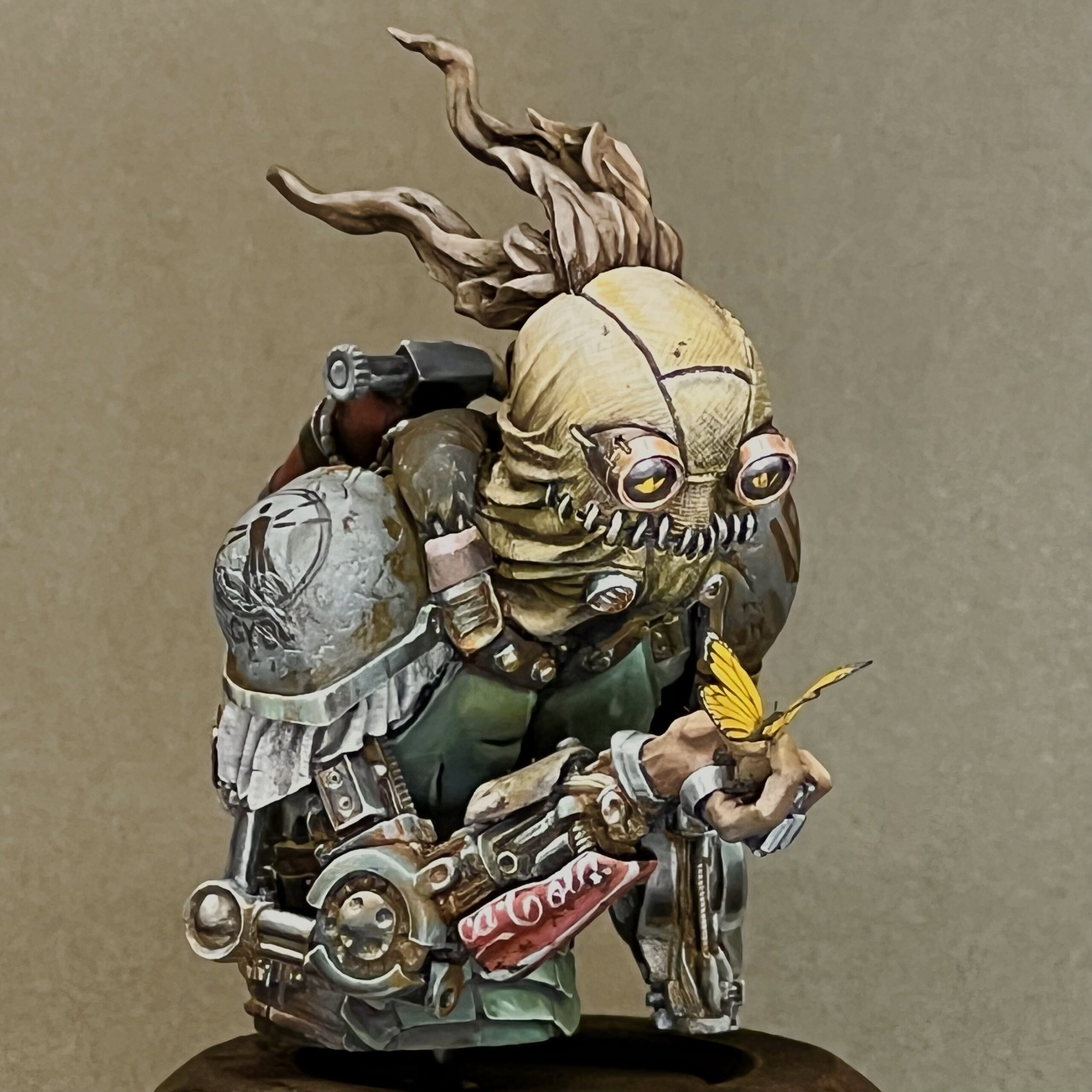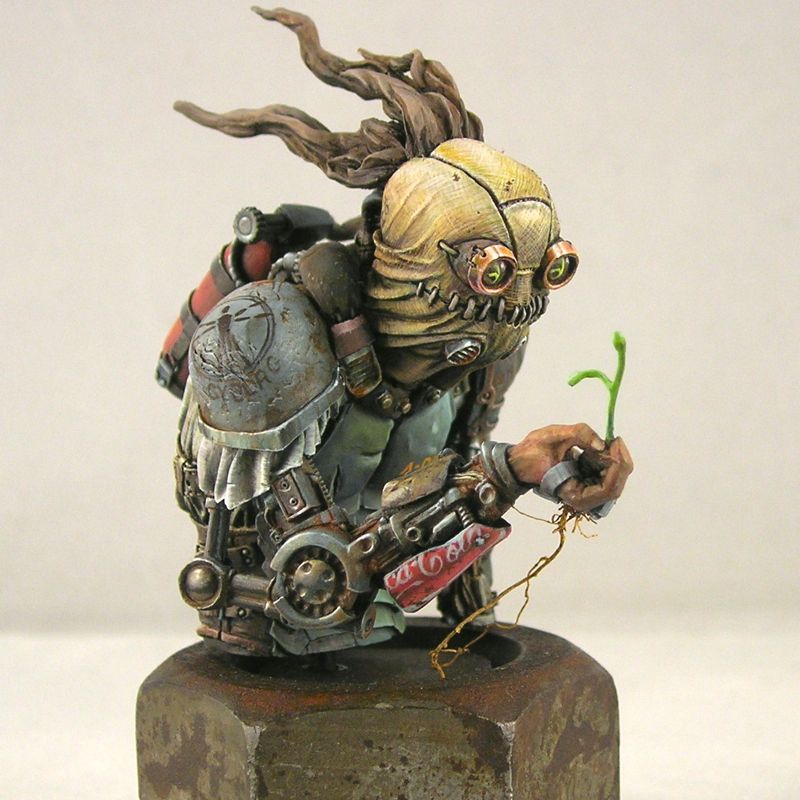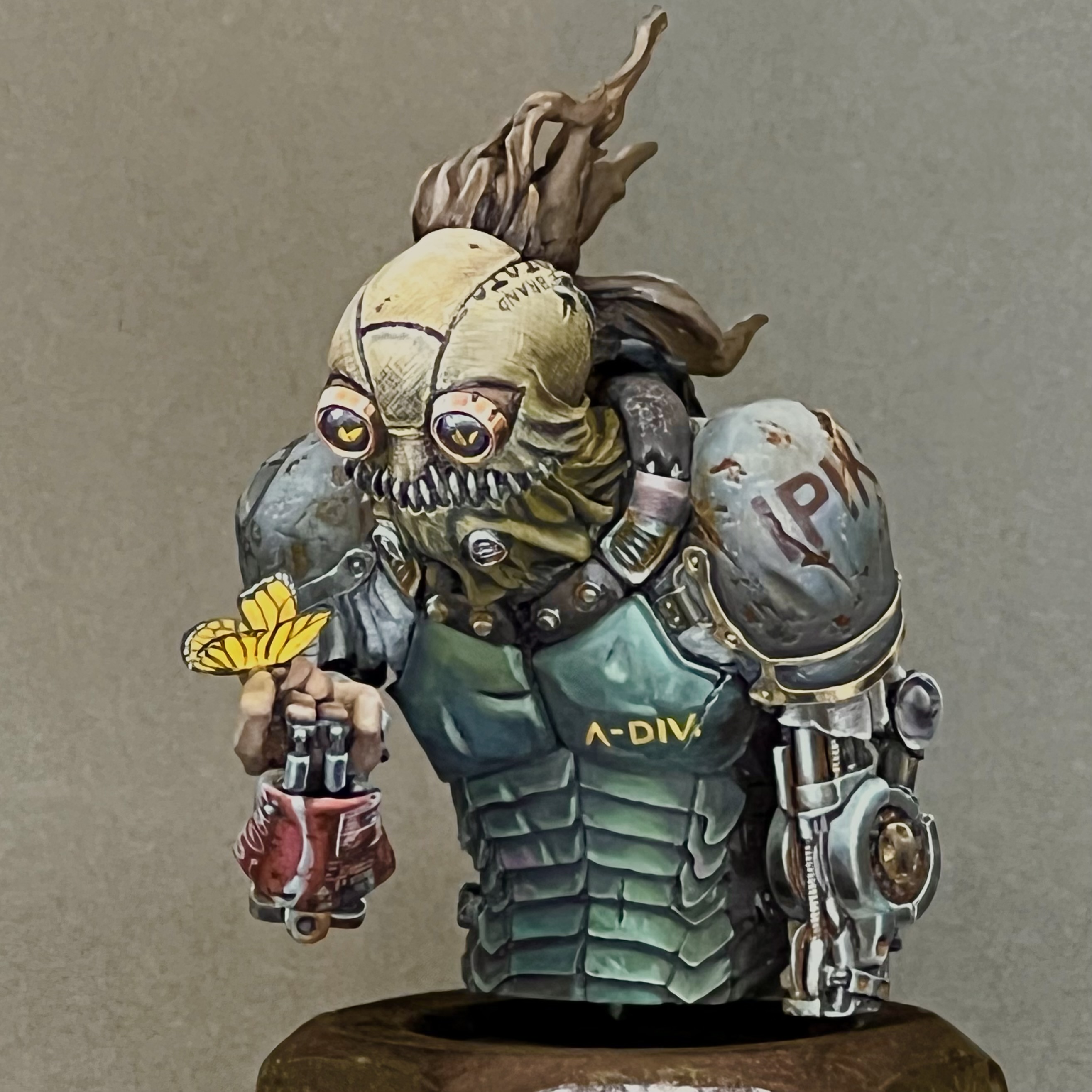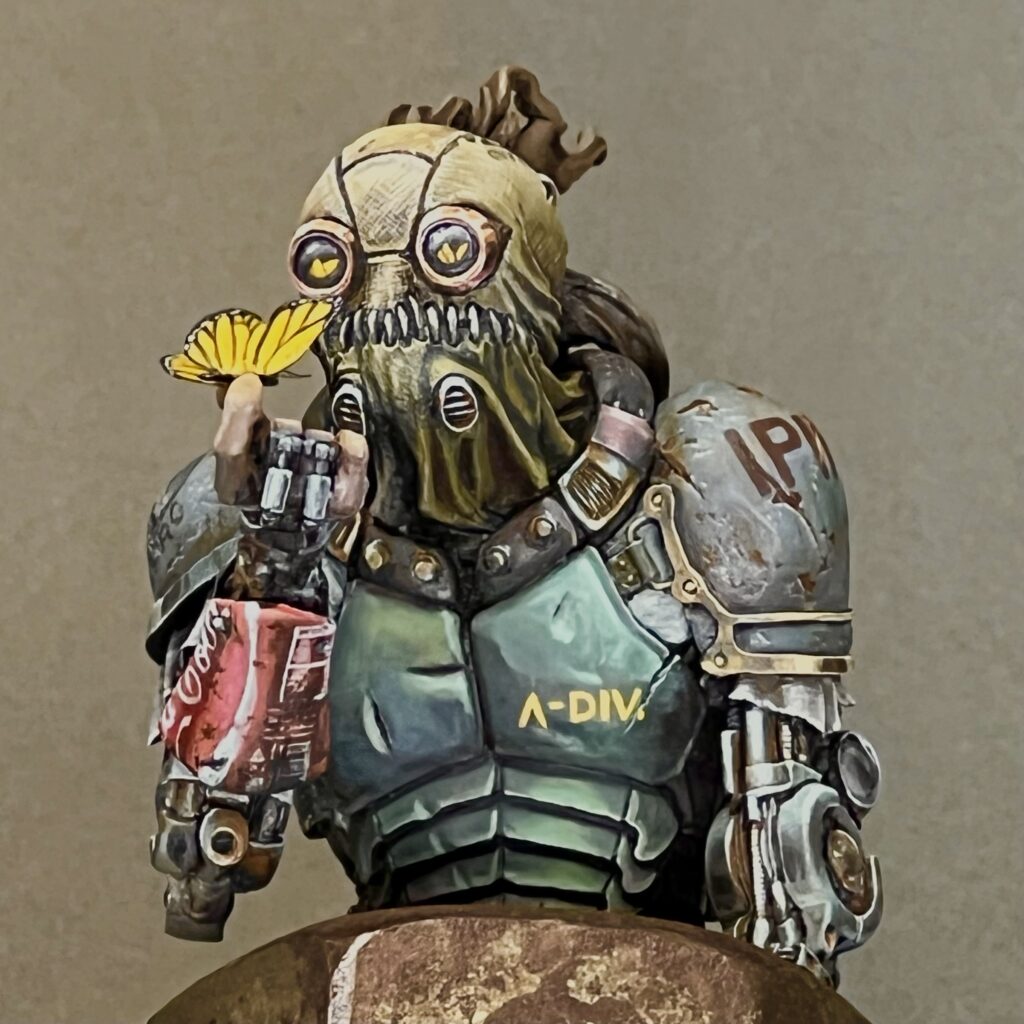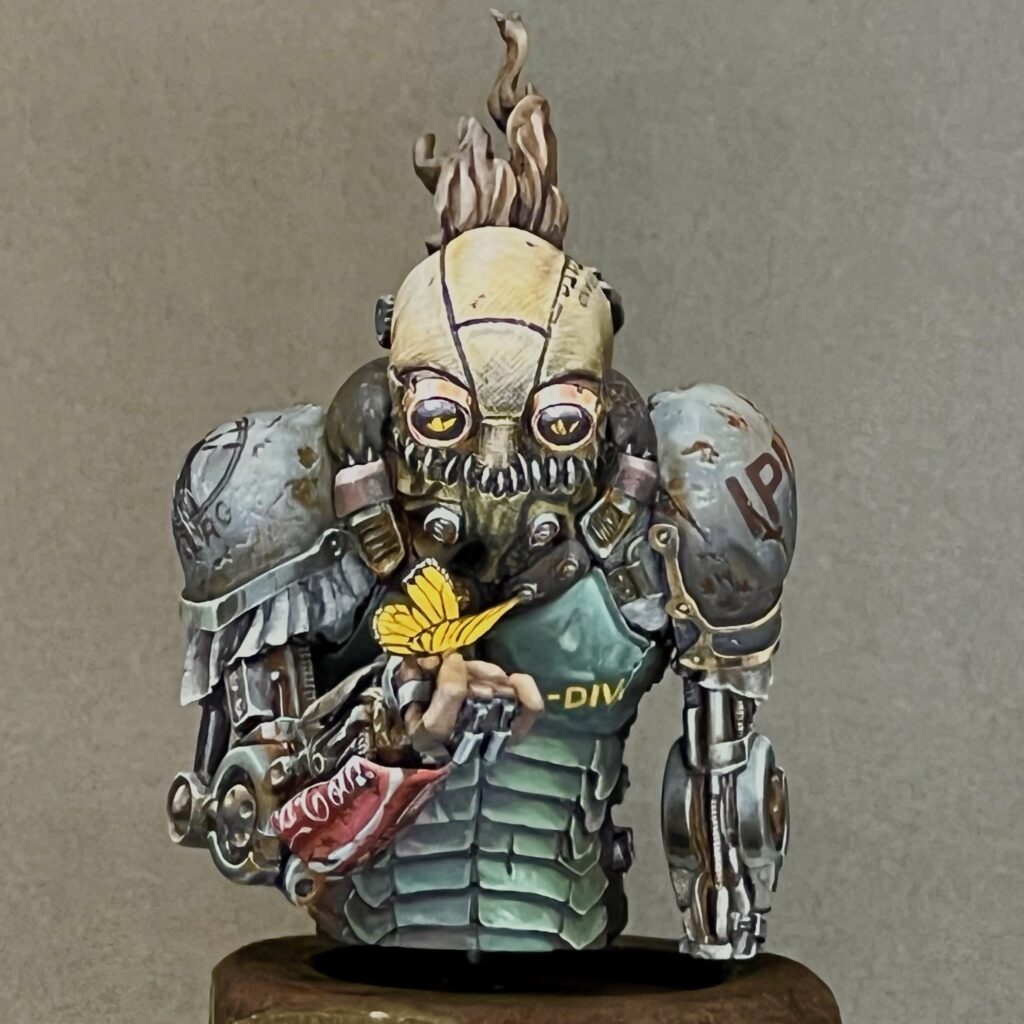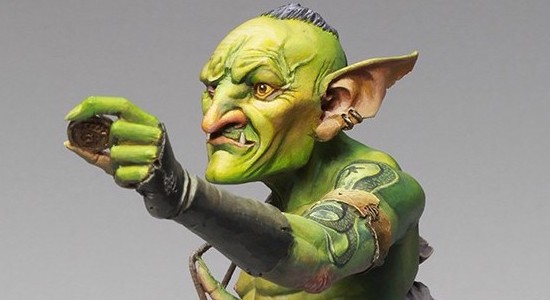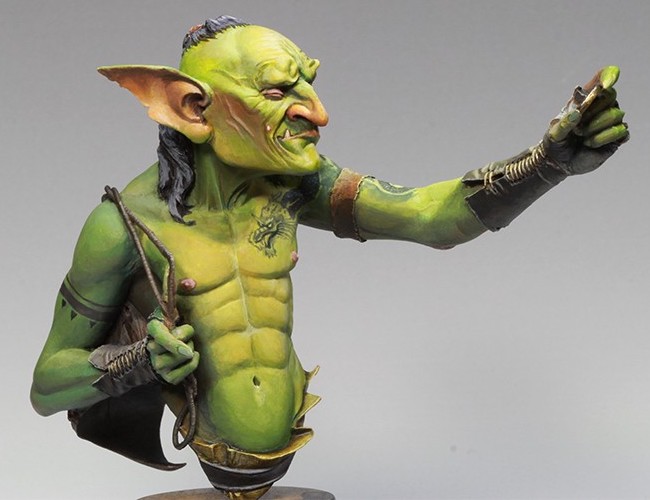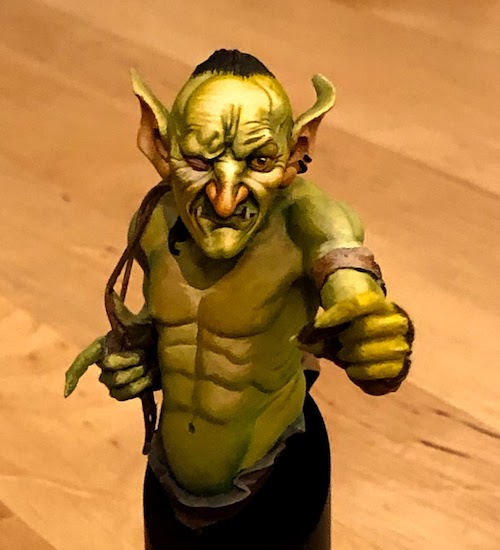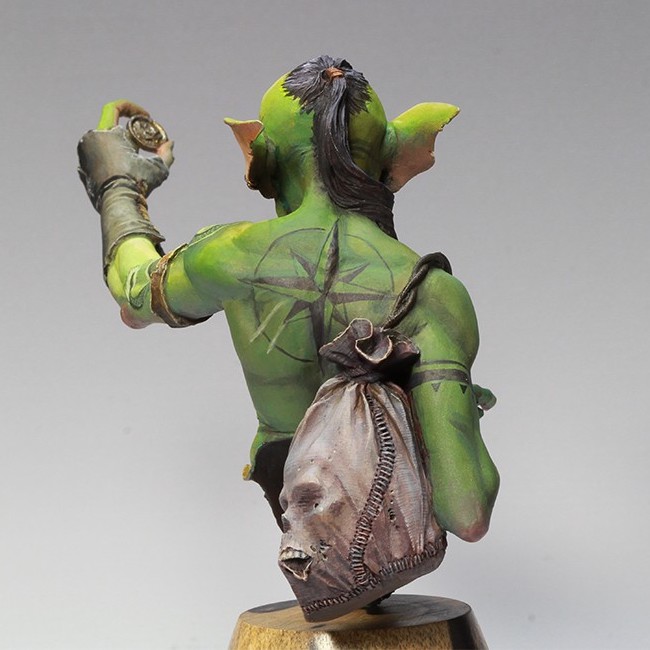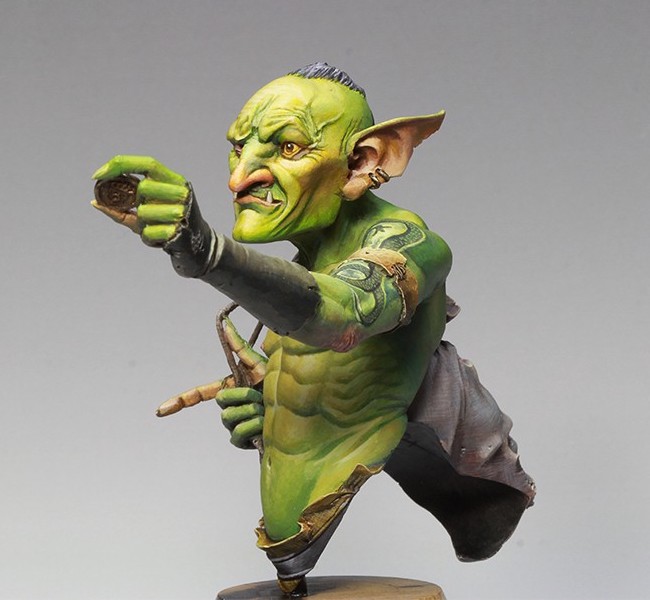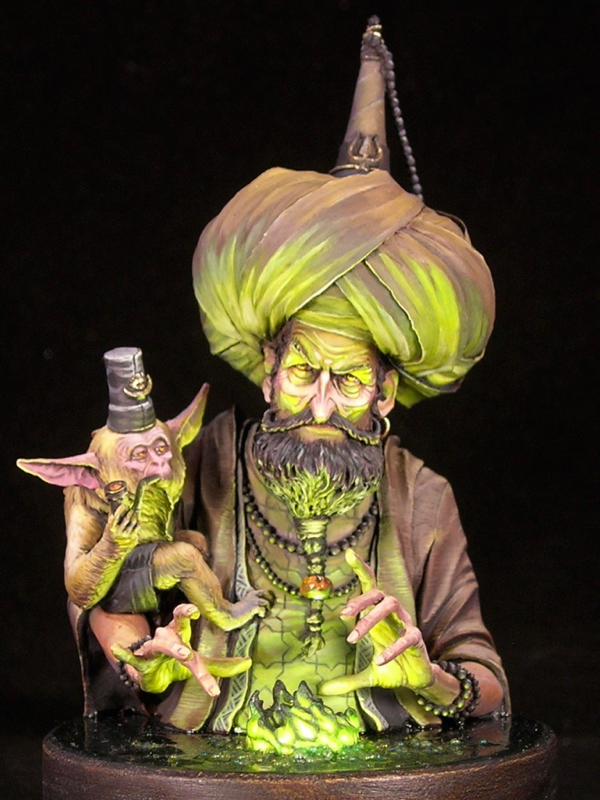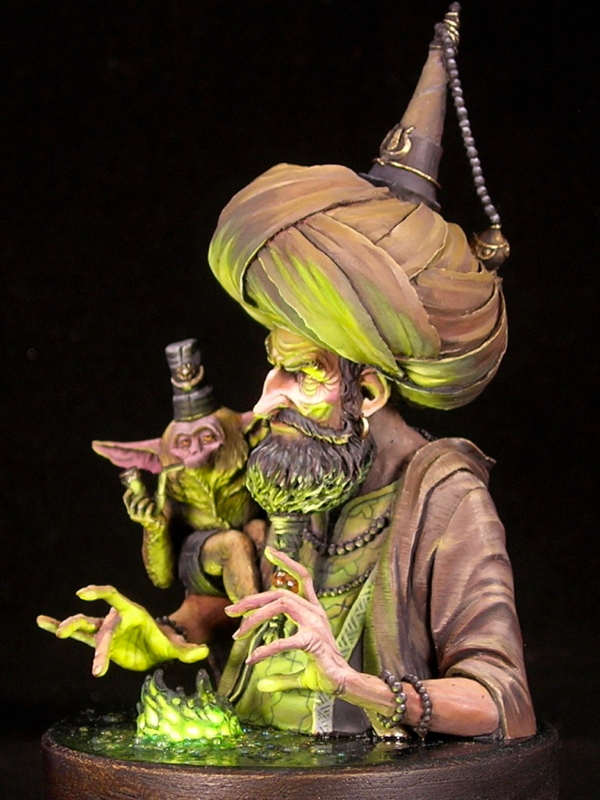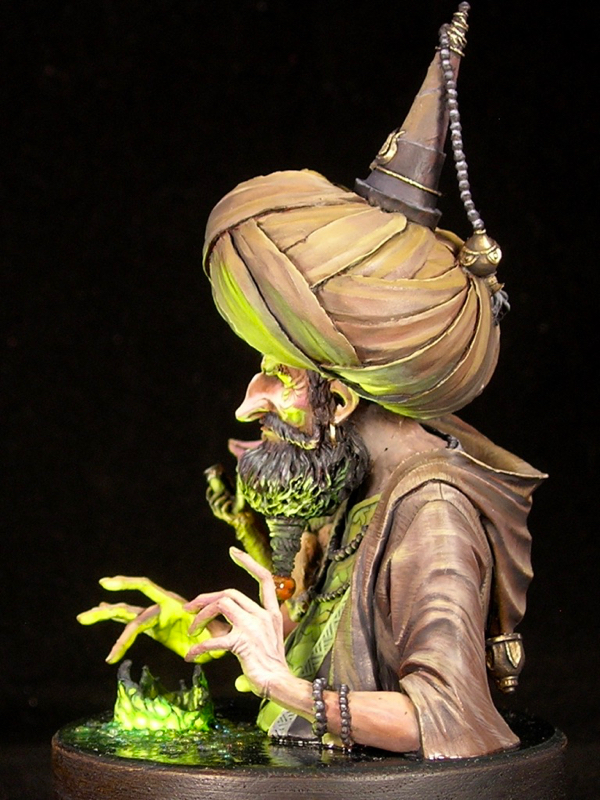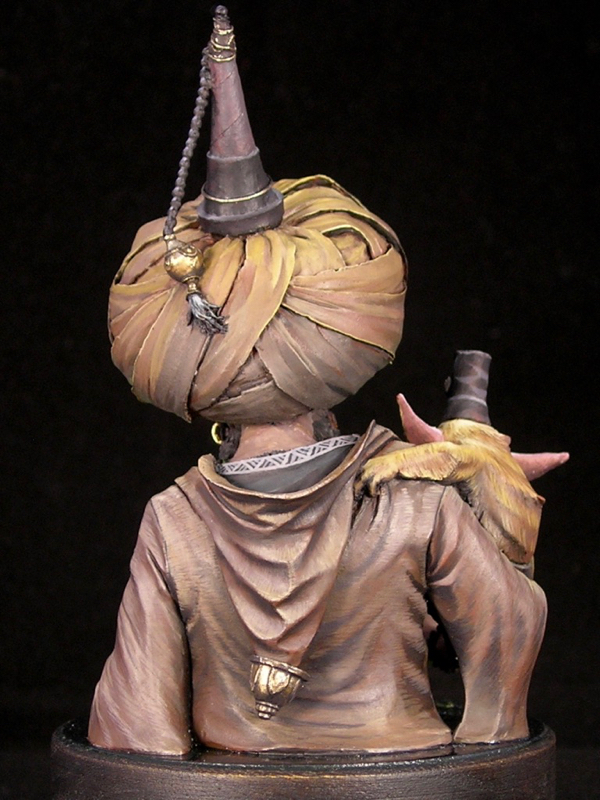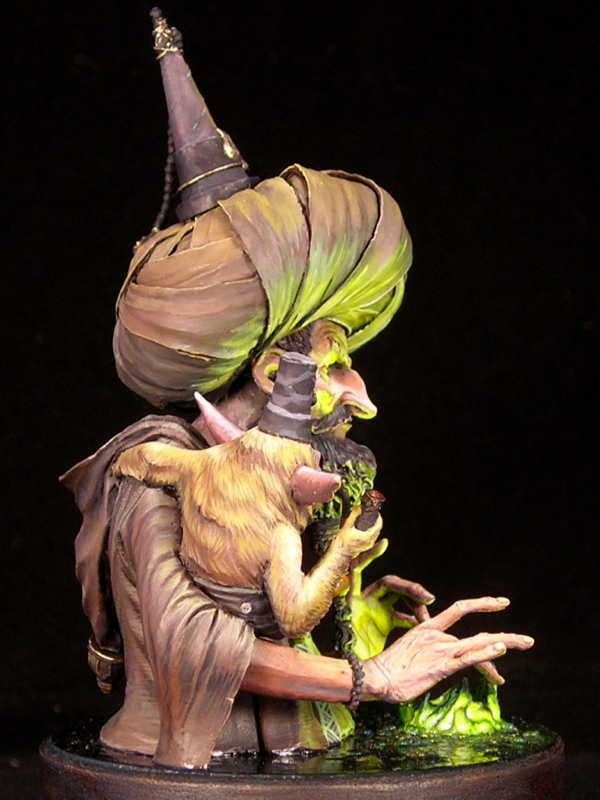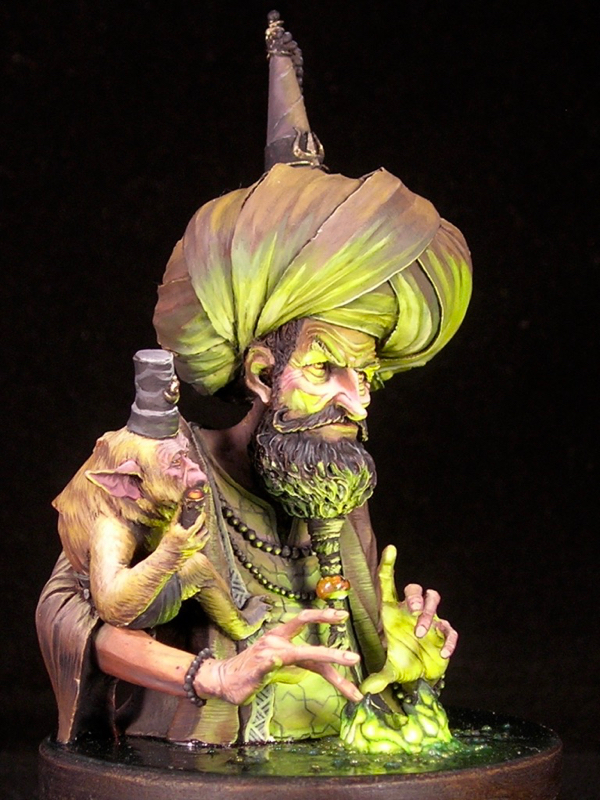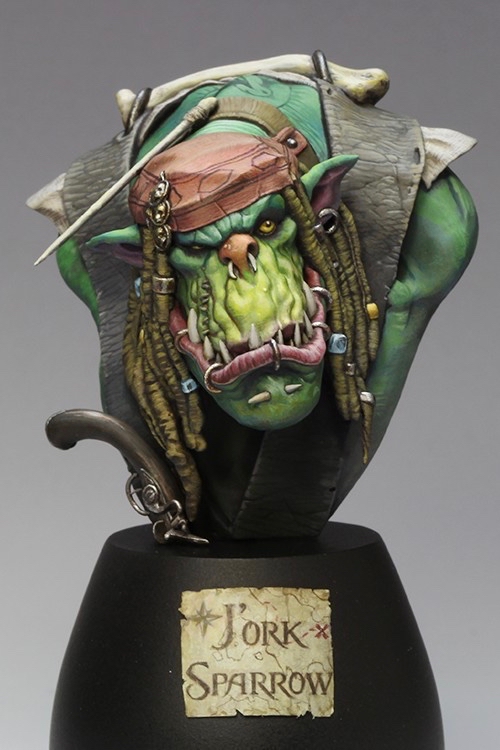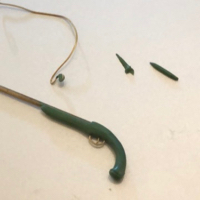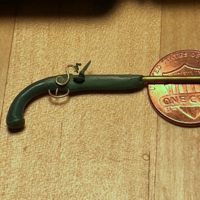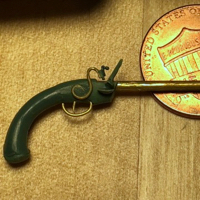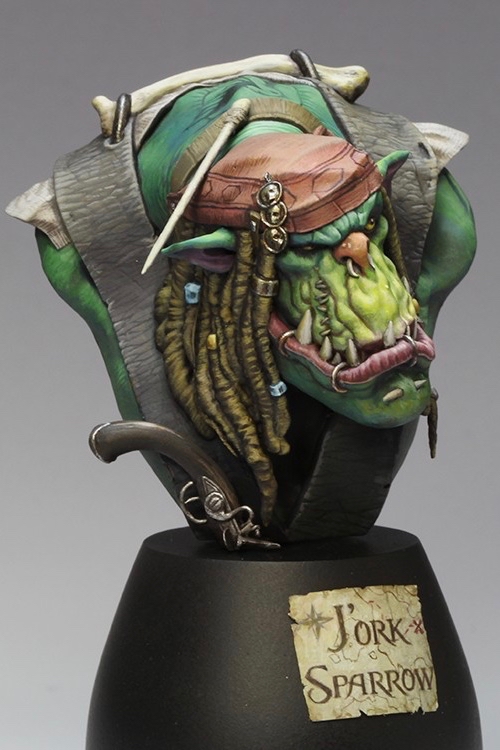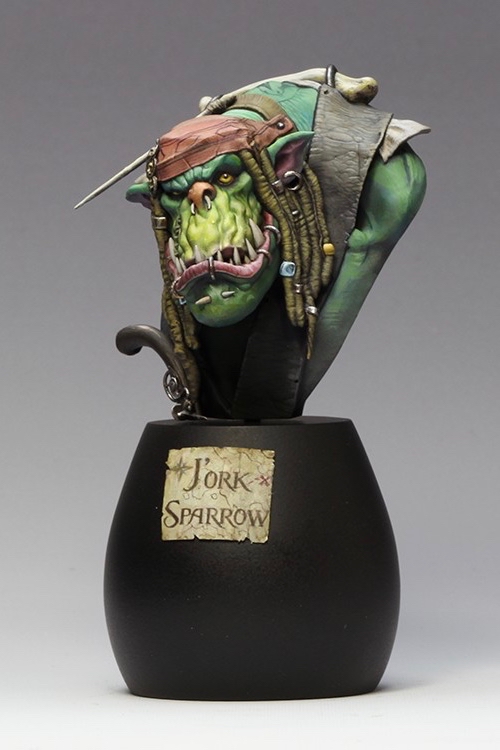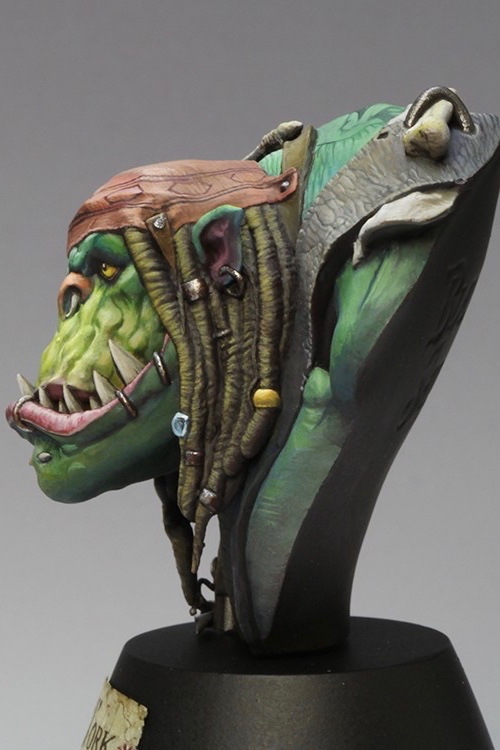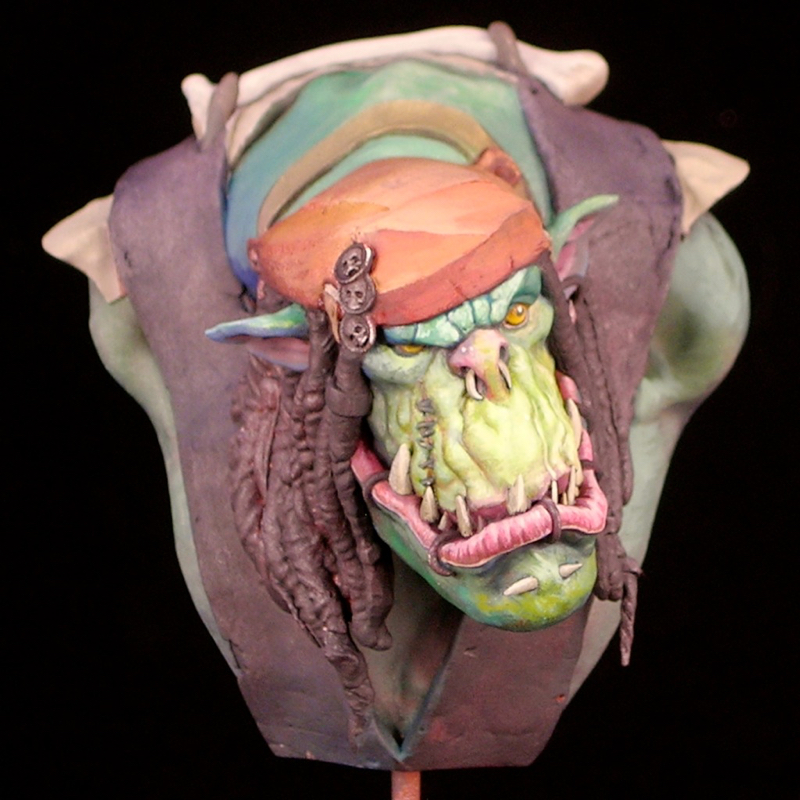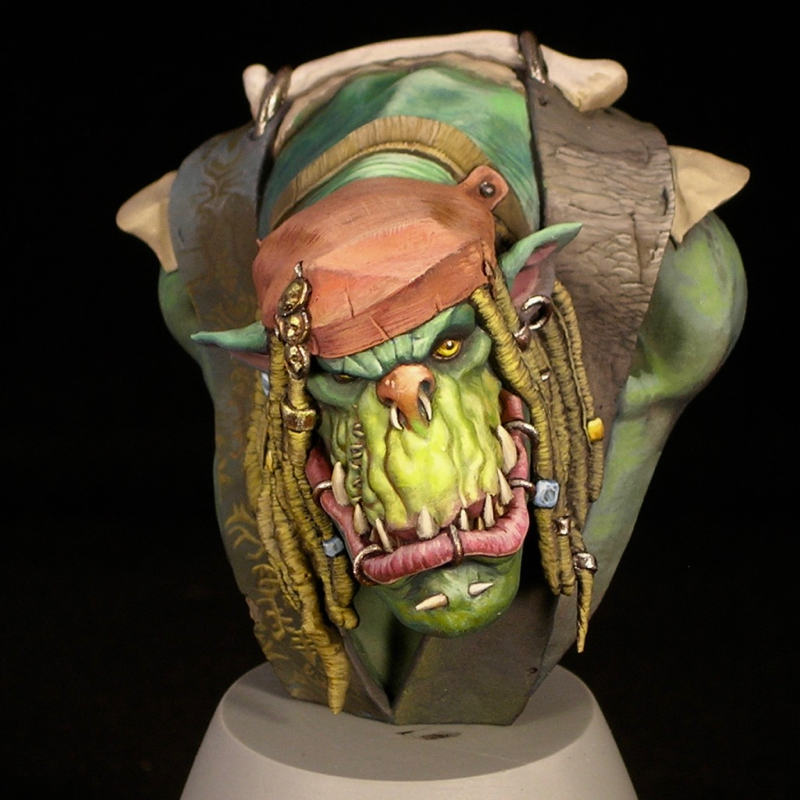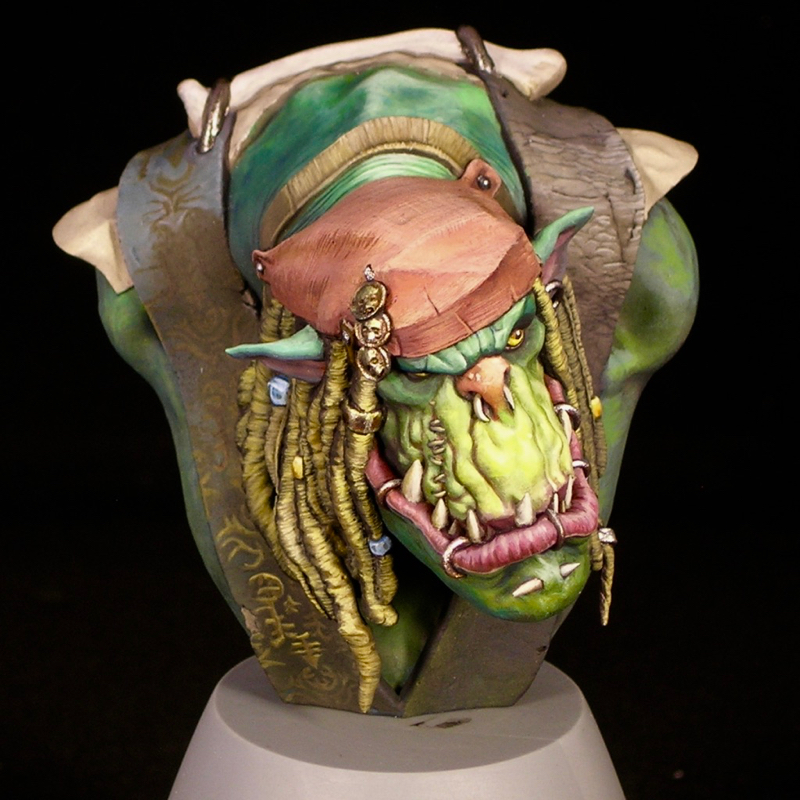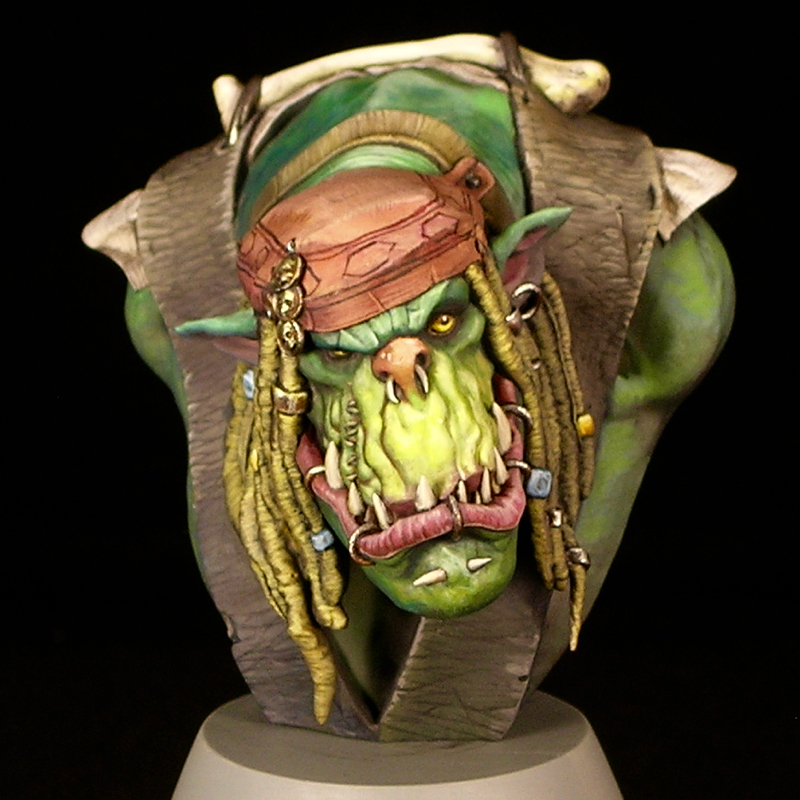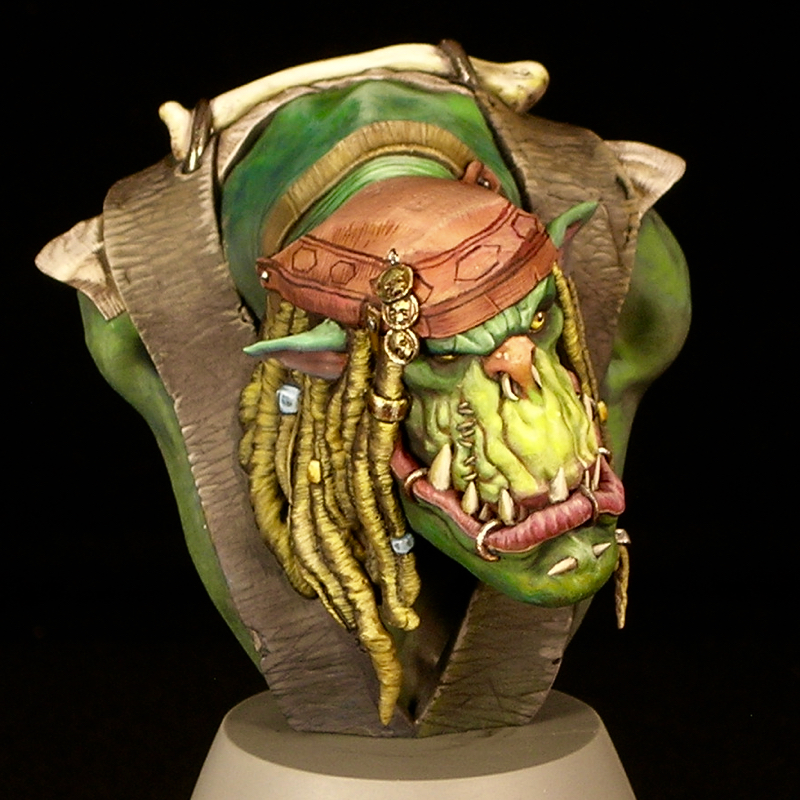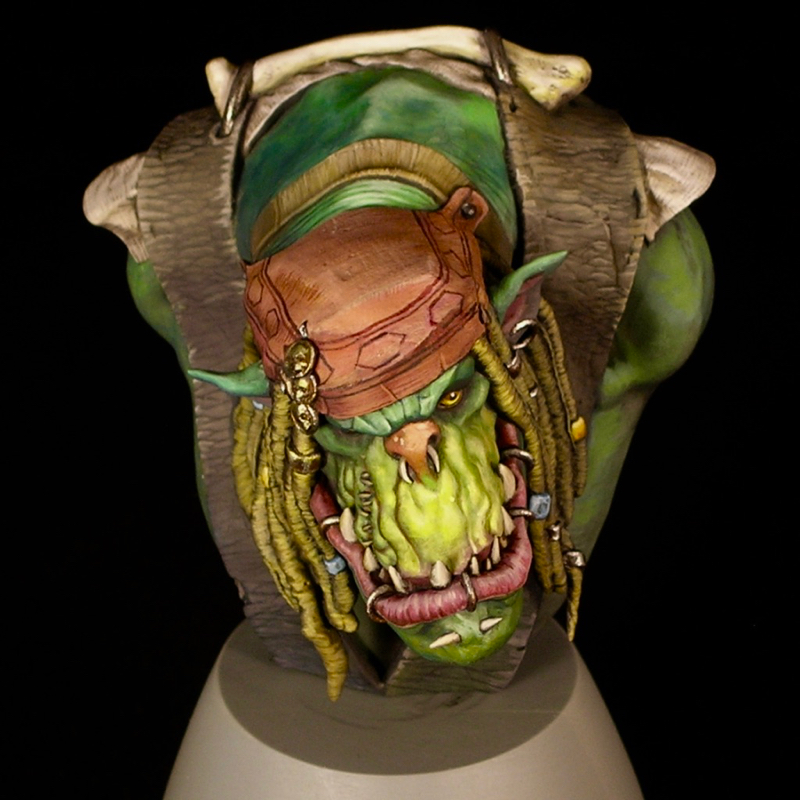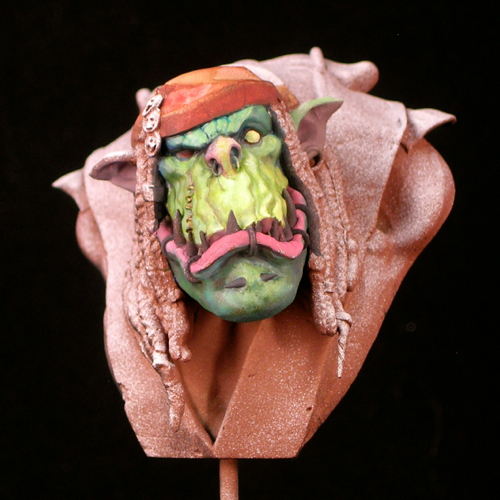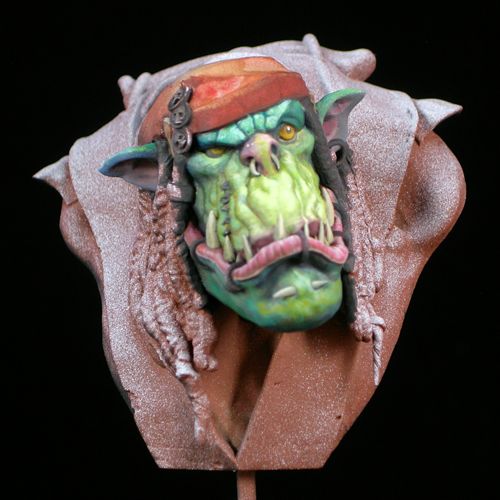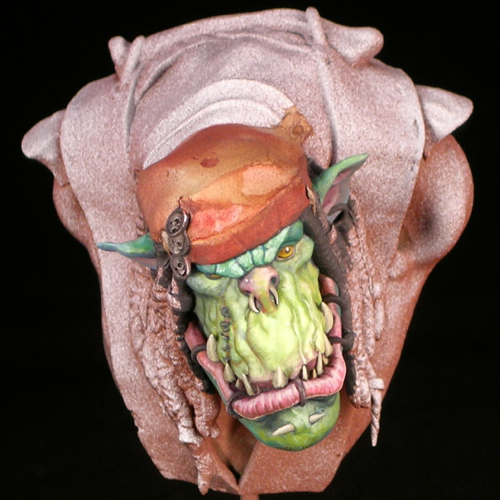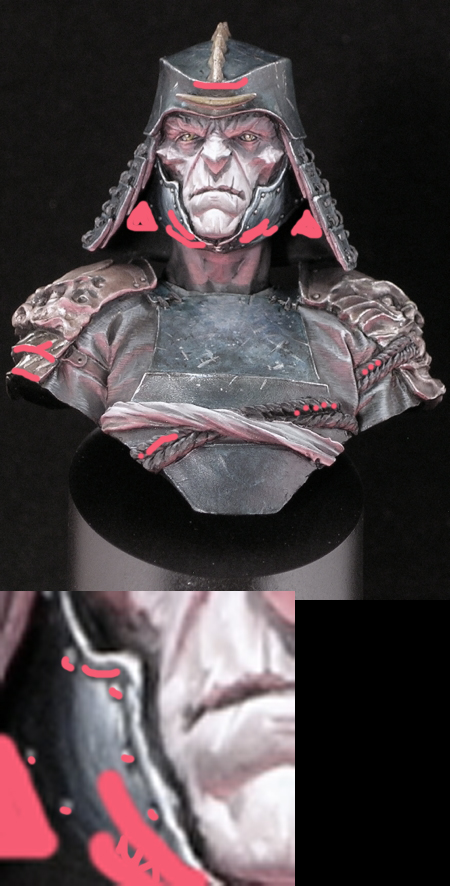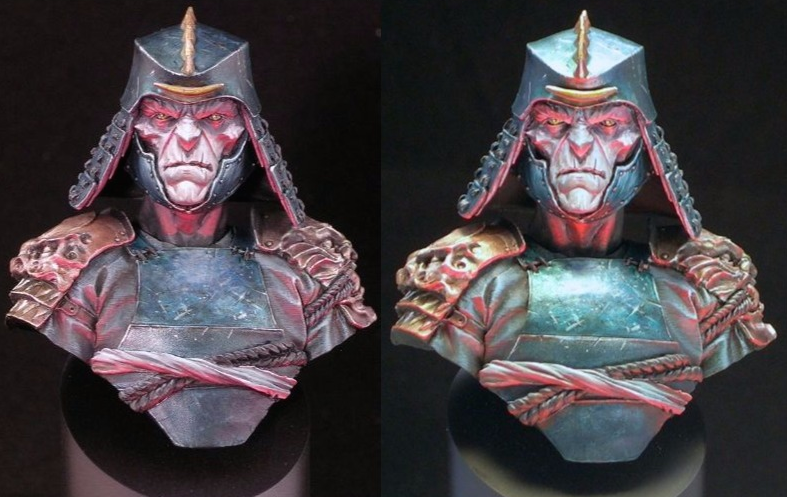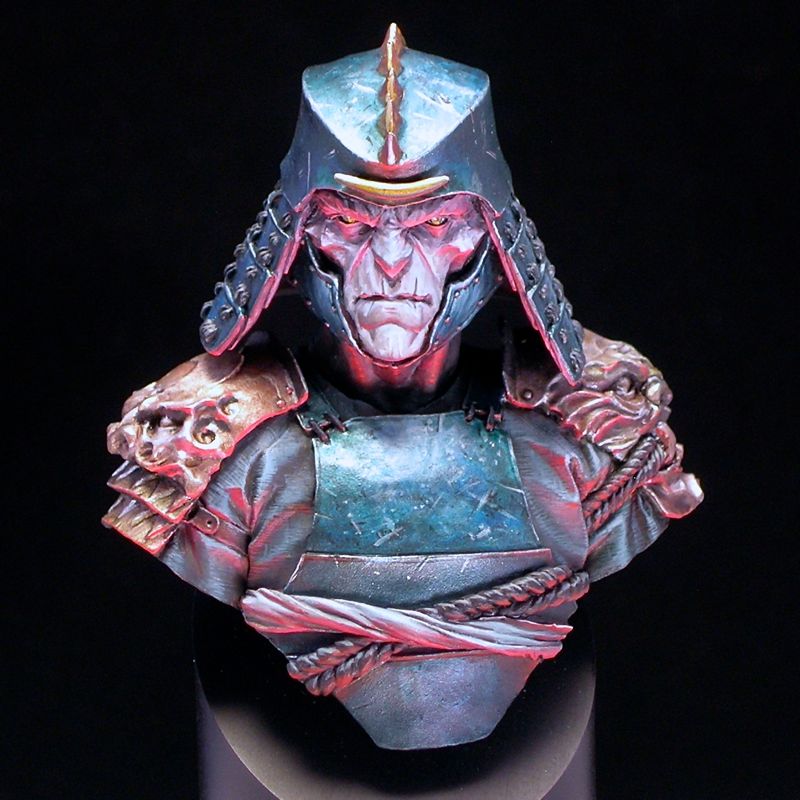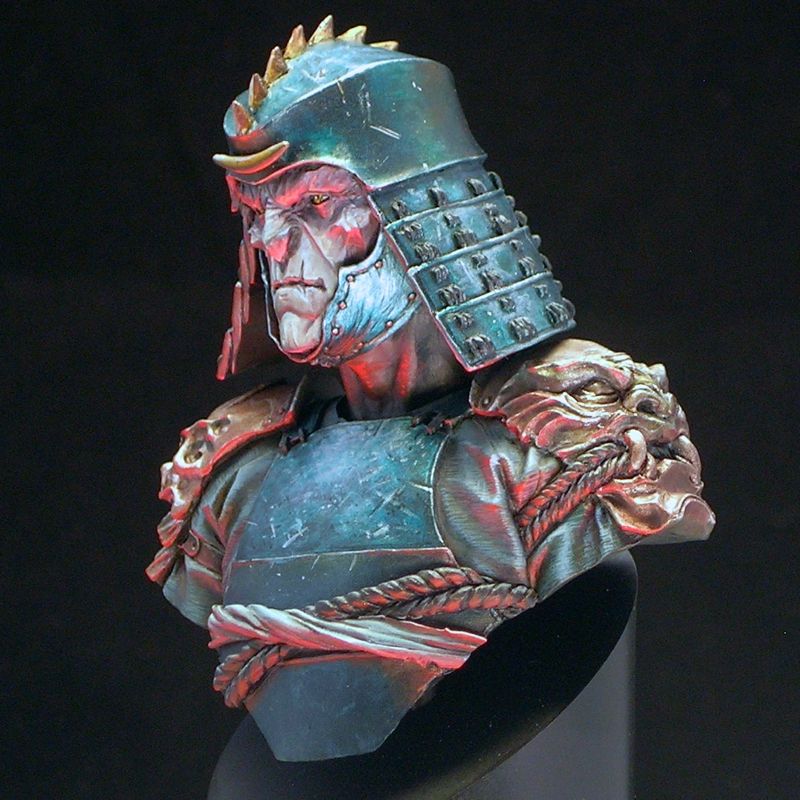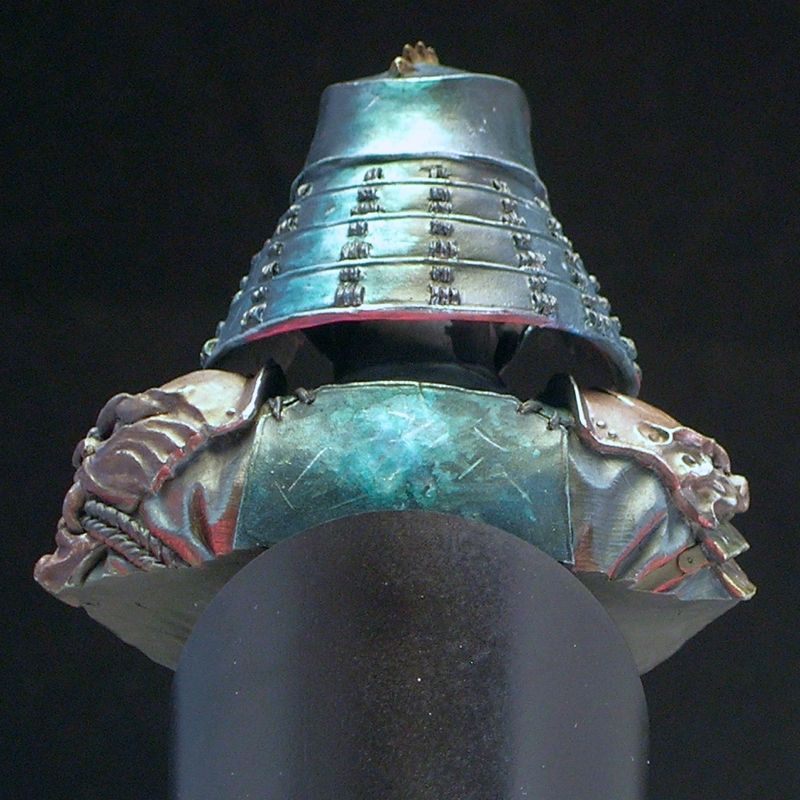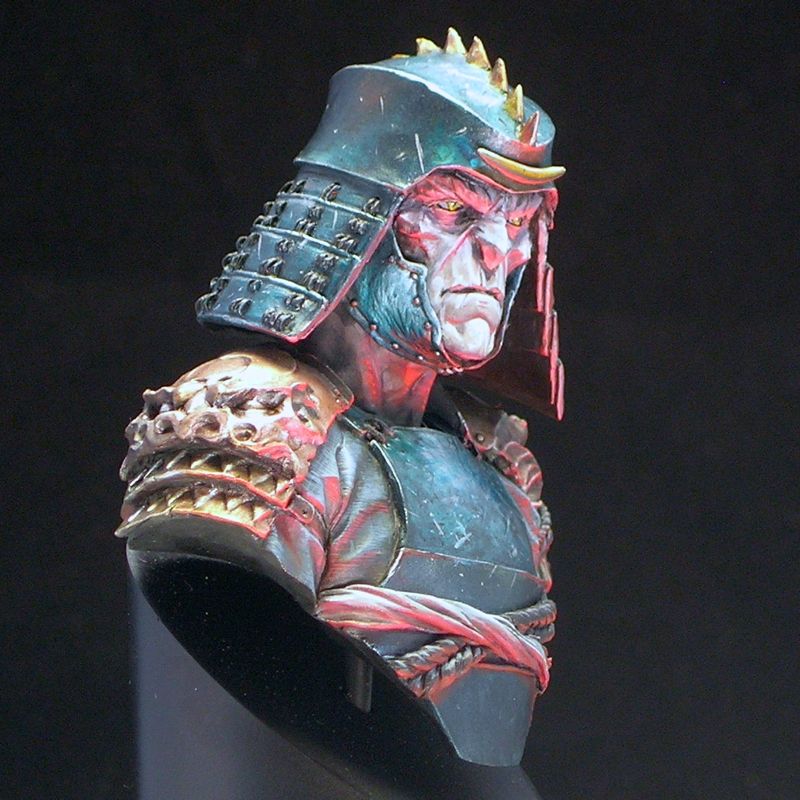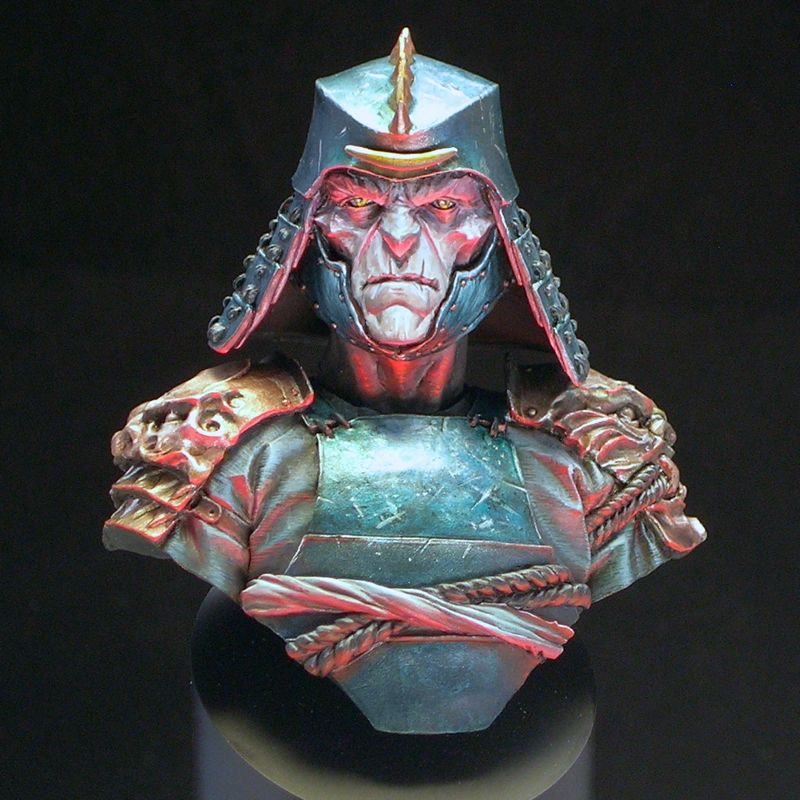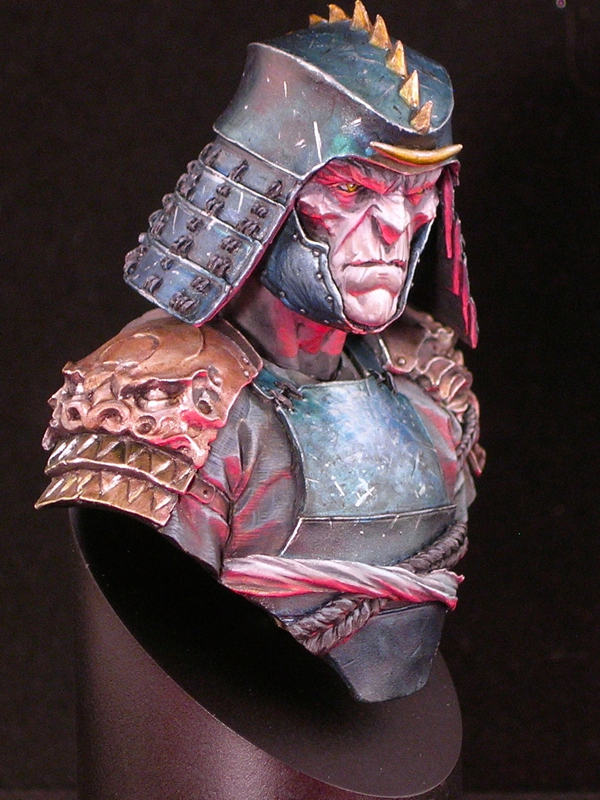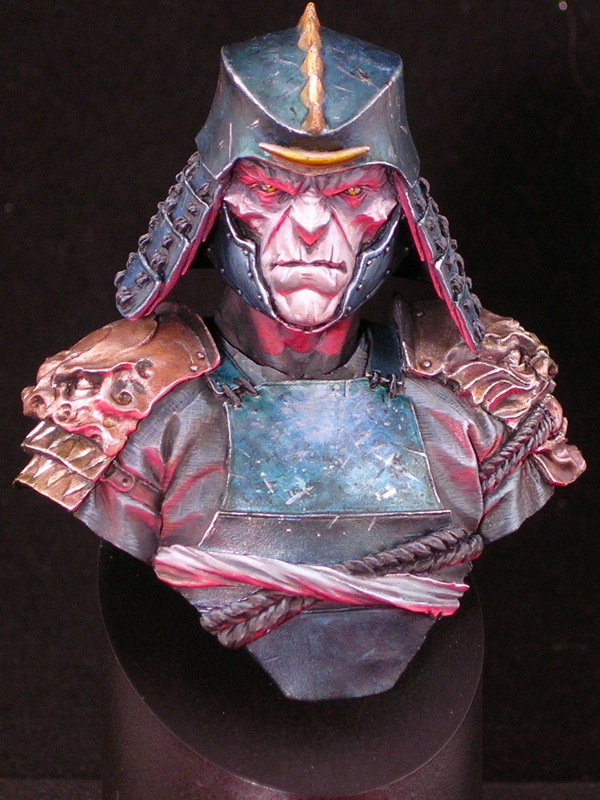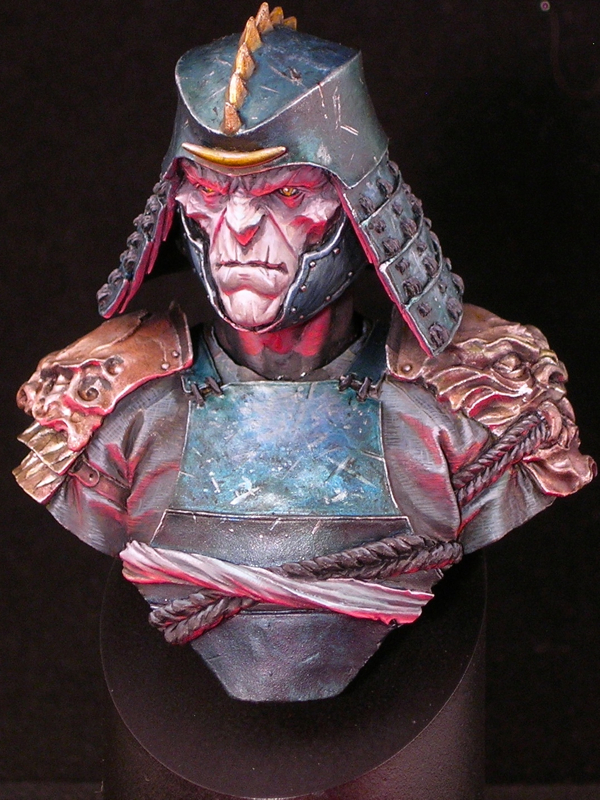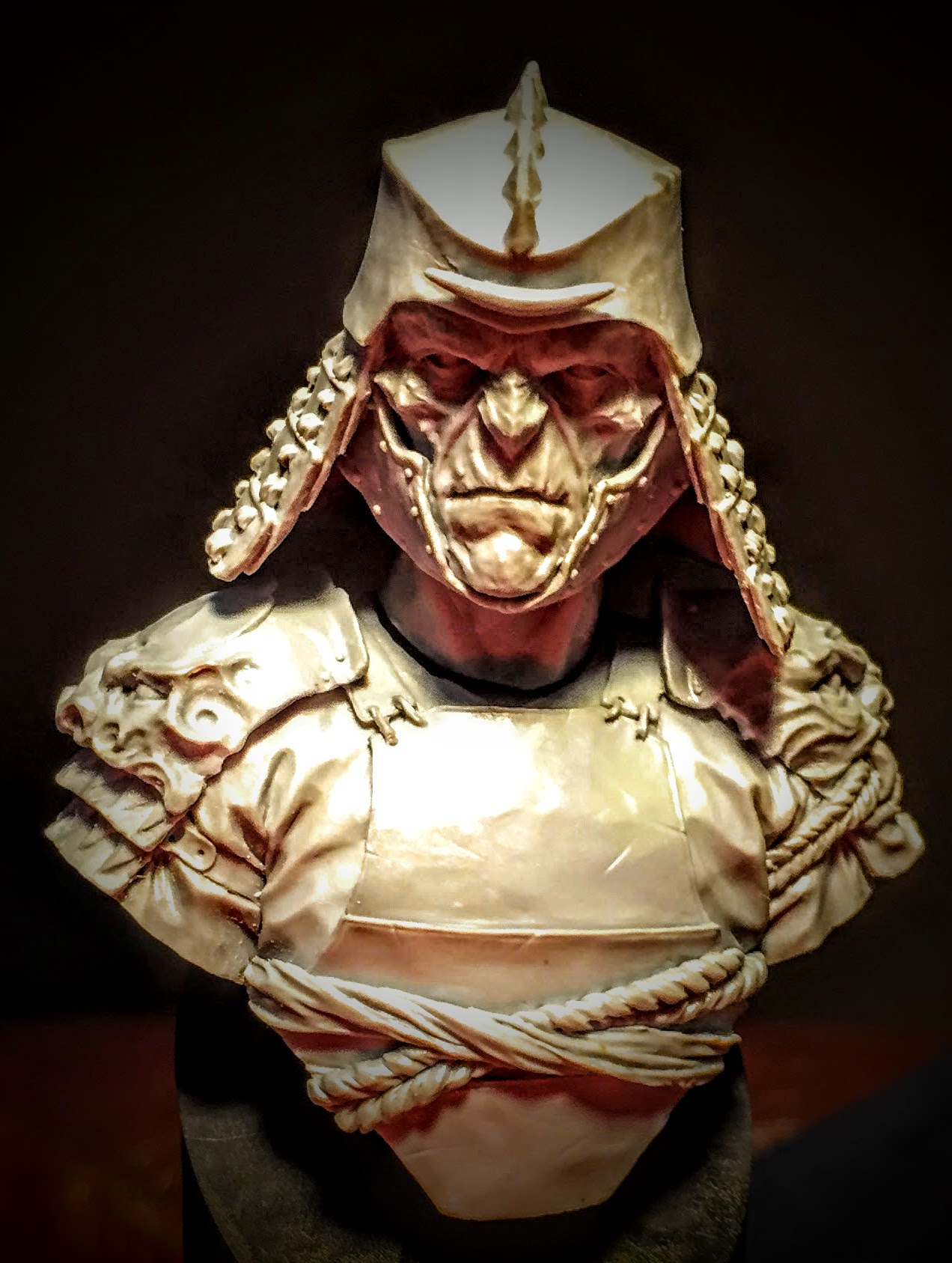When I saw Masclans Miniatures new bust “The Joy,” I immediately wanted to paint it. It’s a great bust, full of positive emotion, and I thought it would be fun to do a contemporary subject rather than my usual fantasy fare. One of my first steps working on the mini was searching a reference for the t-shirt. I imagined this character at a concert or music festival of some kind, so I started by looking at shirts from all of my favorite bands. However, I couldn’t quite find one that grabbed me. Then, on a lark, I decided to search Taylor Swift. When I saw the official Eras Tour shirt design, I immediately thought that would be fun to paint. That’s how my version of “The Joy” became a Swiftie.
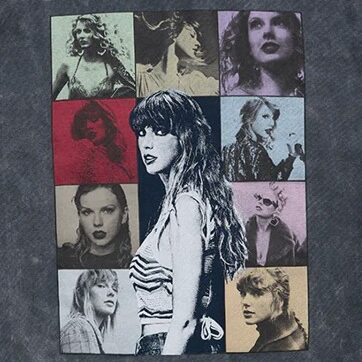
The shirt design translates well into miniature. I started by blocking in the colored grid, so I would know where to put each portrait. Most of the shirt was done in one evening, with the exception of the central Taylor. I left all of the side photos at the sketch stage, but I did spend a bit more time refining the main figure in order to get an acceptable reproduction of the original photo, as good as I could make it at this scale. Her face is only 6mm tall, far smaller than this photo, so I was limited by how well I could control paint at the sub-millimeter scale.
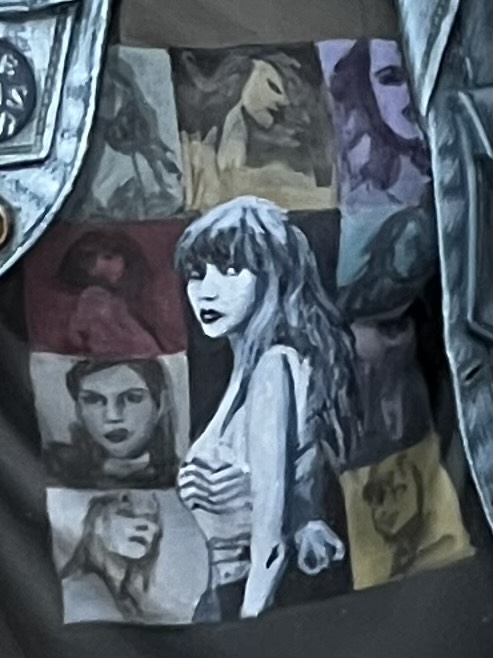
This figure has a ton of opportunities for freehand and textures. In addition to the t-shirt design, I had fun doing freehand and textures on the beer bottle, her pins, and the denim jacket. One of the cool things about Marc Masclans miniatures is he includes a tutorial video with each one, and I checked out the section where he talked about how he painted the denim. He shares a lot of useful ideas and reference photos, some of which I used in mine. I also did some things differently from Marc. He created his denim texture by stippling, while I mainly used cross-hatching for mine.
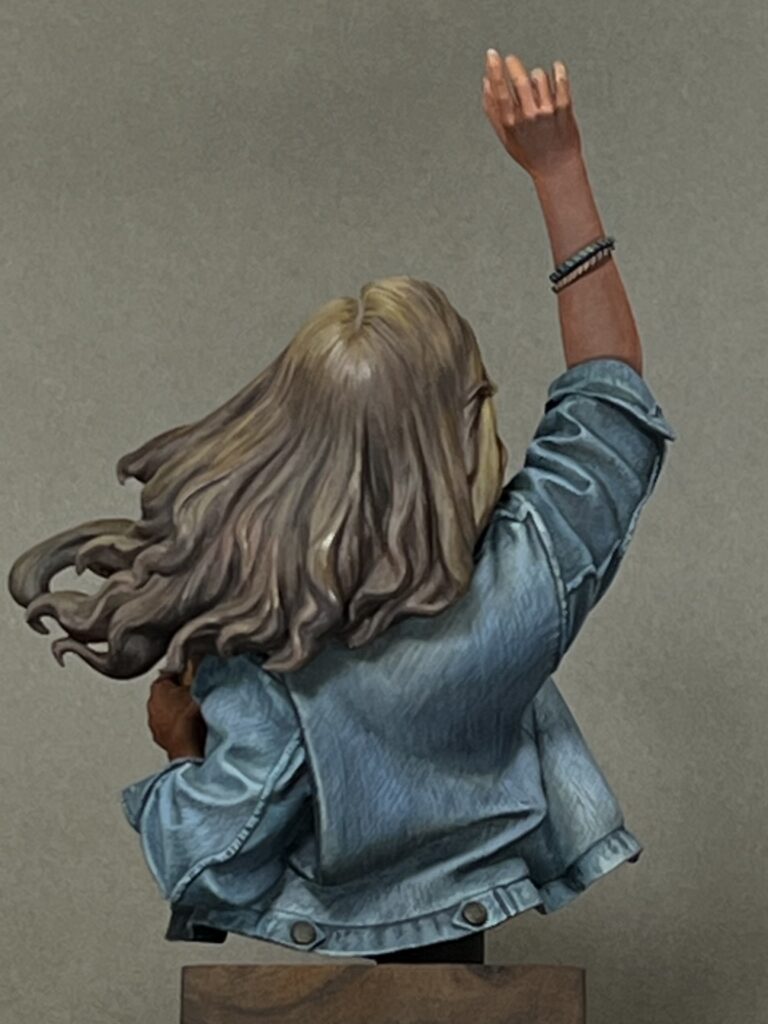
One thing that Marc didn’t mention in his video (or if he did, I missed it) is that denim is not a simple weave. Rather, it is a twill fabric. This means that even though the threads go vertically and horizontally through the weave, the vertical threads (the warp) are much more apparent than the horizontal threads (the weft), as they go over more often than they go under. Furthermore, the pattern of the weave creates the appearance of diagonal bands.
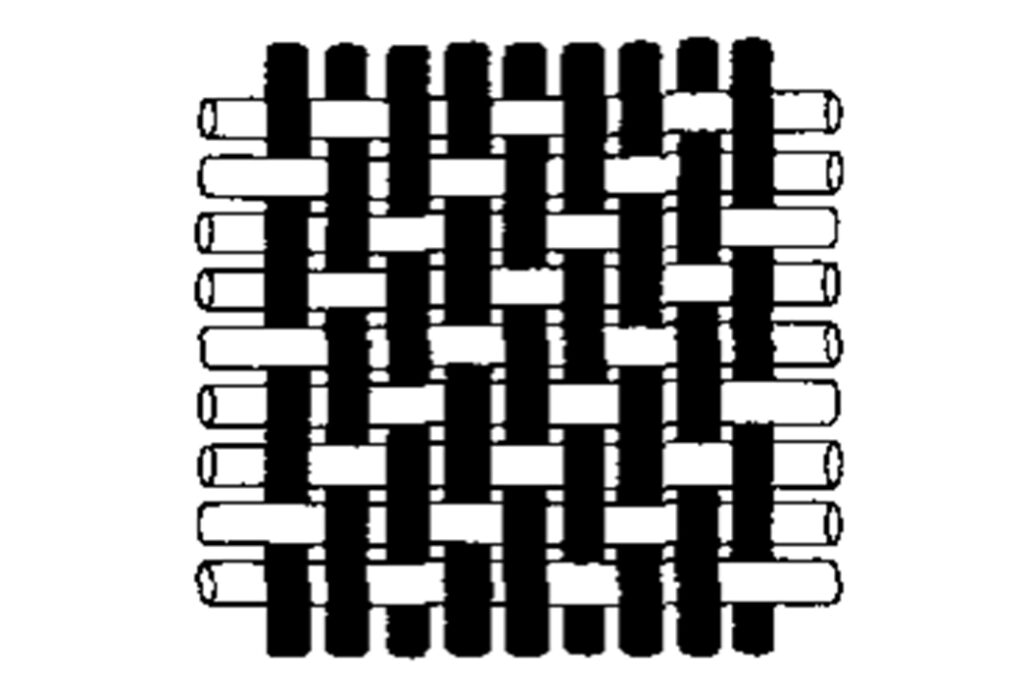
To get the right look for denim, rather than a simple vertical/horizontal cross-hatch, I did a vertical/diagonal cross-hatch, consistently following the directions of the vertical warp threads and the diagonal twill pattern.
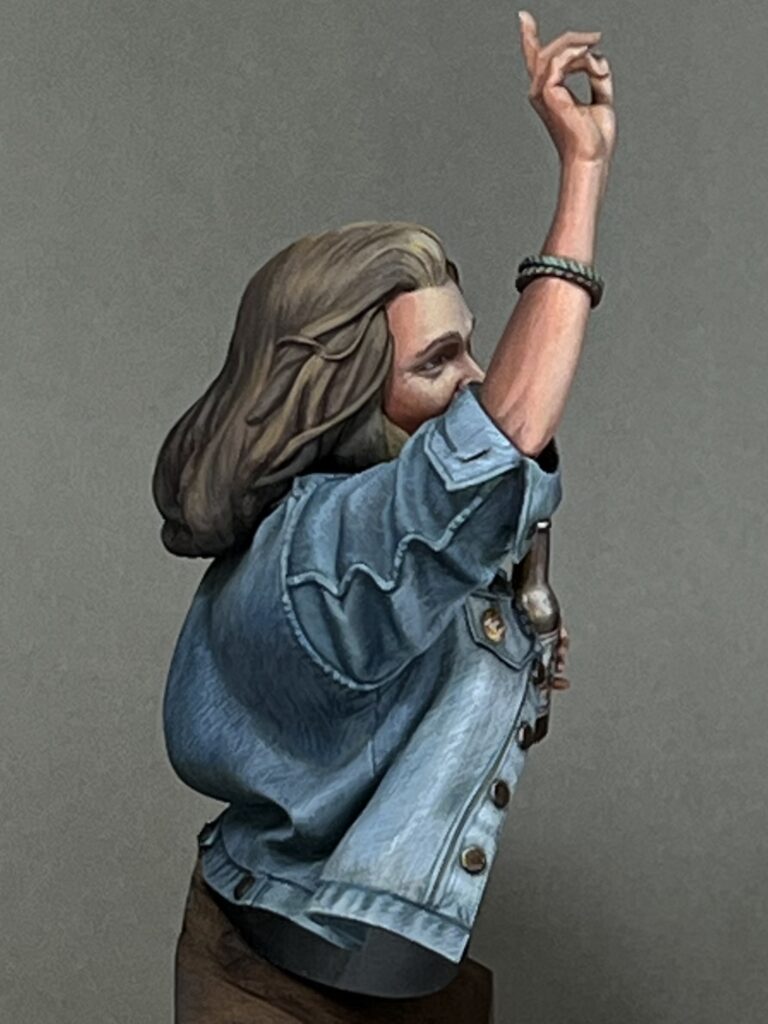
Another thing about denim is that along the overlaps of material along seams and edges, the fabric bunches in waves, and the waves collect more dye in the troughs and fade at the peaks. I used lighter and darker cross-hatching to replicate this effect.
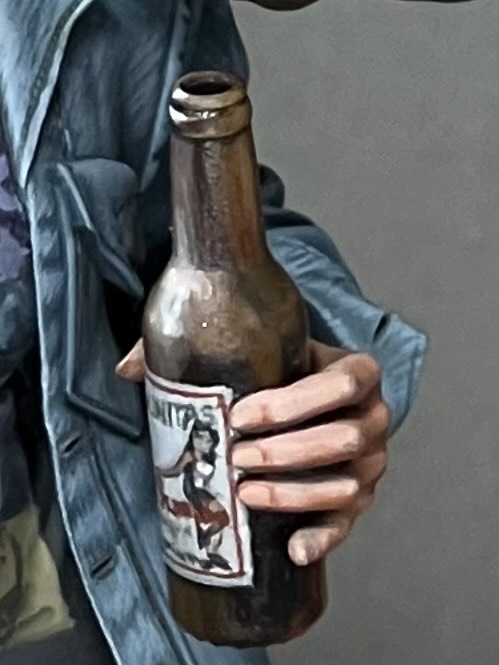
Another fun item was the beer bottle. I enjoyed painting both the brown glass effect and the label on the bottle. For the label, I copied a beer from Lagunitas, which is local to me here in the SF bay area. It has a cool label, I thought it struck a good balance between being too generic or too obscure, and I like the beer.
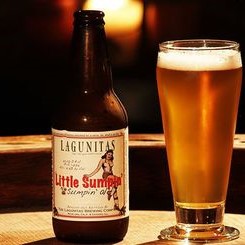
I feel the face came out well. I thought it would be fun to try to add a bit of age to the character with paint, and I think it works well for the piece. For me, it adds to the contemporary, realistic subject matter. It’s also fitting for the character, despite what some may think; Taylor Swift fans are all ages and genders.
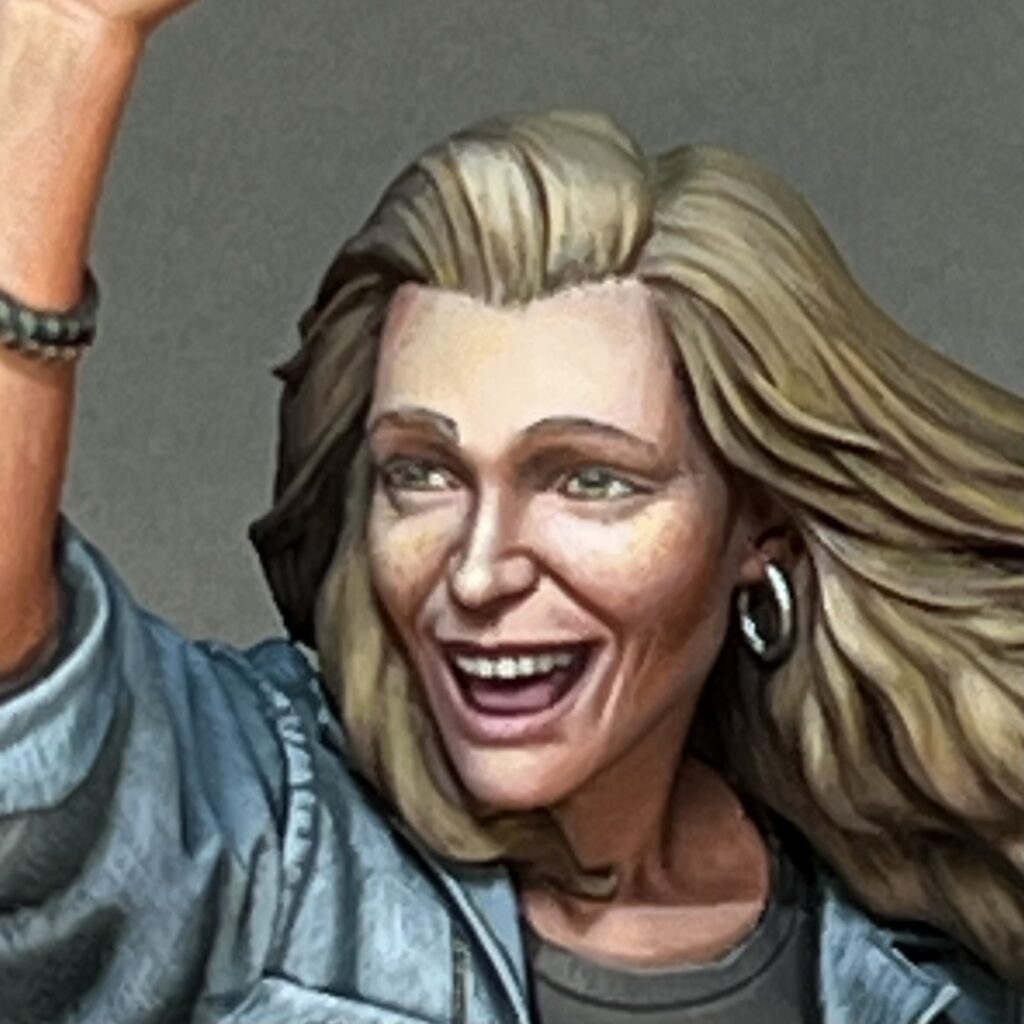
I don’t consider myself a Swiftie, but I did end up listening to a lot of Taylor Swift while painting this bust, to be in the proper spirit. She’s a gifted musician. I don’t think I made my wife too sick of my listening habits, but she did give me plenty of shit about it. But she also pointed out there are only two types of people in the world: Taylor Swift fans and liars.
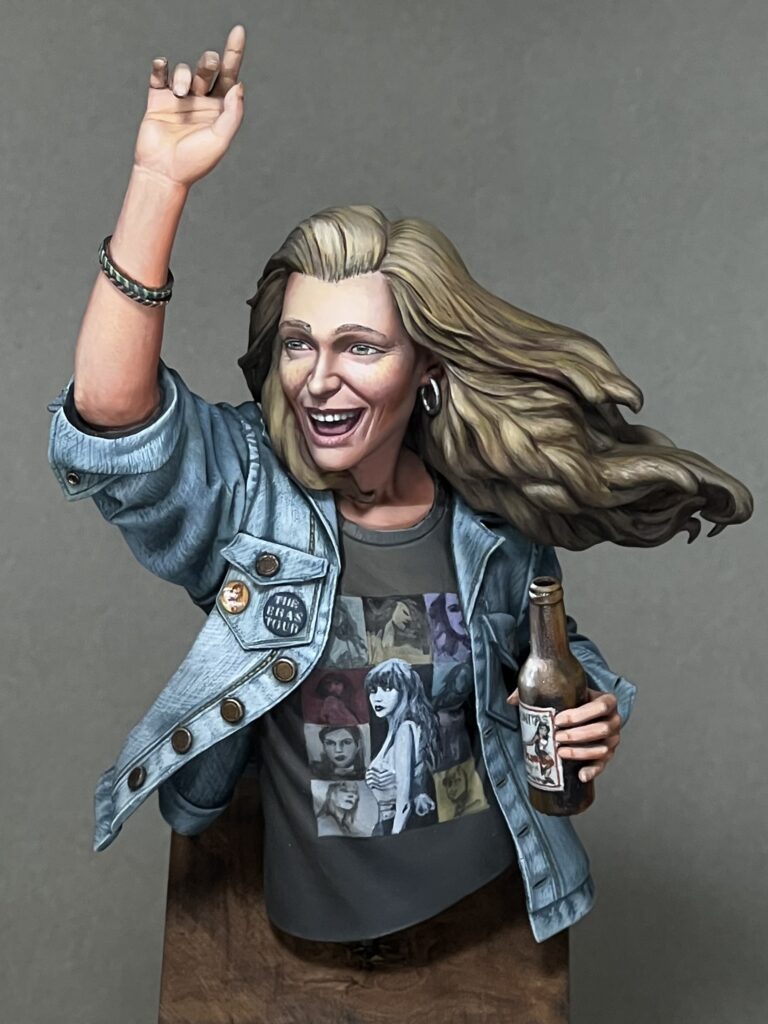
I entered this bust into the painting competition at Reapercon this year, and was delighted to win best in show. Reapercon is the largest competition where I’ve won that honor—there were over a thousand entries this year. To be chosen as best in a field that size is an achievement.
